このブログ記事の翻訳を進行中です。もうすぐ完成しますので、後ほど再度ご確認ください。ご不便をおかけして申し訳ありません。現在は、こちらで提供されているGPXルートや地図などの情報を自由にご利用ください。

The 68 km cycling route around Taipei offers an ideal option for long-distance training within the city limits. A significant portion of the route, 52 km to be precise, follows the Riverside Bikeways, ensuring a stress-free and disruption free cycling experience, thanks to its motor-vehicle-free and traffic-light-free environment. On the east side of Taipei, cyclists have two options to complete the loop, each involving a climb over a 200-meter hill, adding a touch of intensity variety to the route.
The first option involves ascending through Fudekeng, a tranquil graveyard with minimal traffic. Upon reaching the summit, enjoy a thrilling descent on Section 4 of Yanjiuyuan Road, leading you to Nangang District. Exercise caution and control your speed, especially considering the potential for sharp turns at the bottom of long slopes.
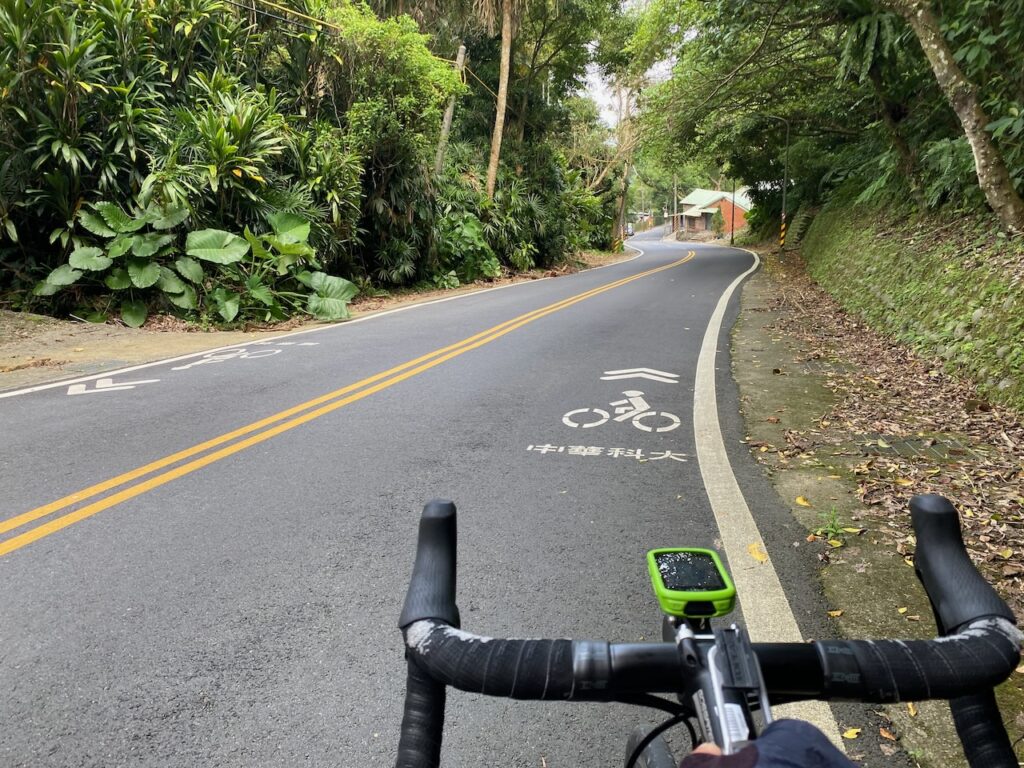
The second option involves taking County Highway 106 into Shenken District of New Taipei City. Here, you’ll encounter an old street with stinky tofu and various restaurants offering lunch options. Following this, a climb over County Highway 109 is necessary to reach Nangang District and the Riverbank Bikeways. This route tends to have busier traffic, and the ascent and descent on County Highway 109 is steeper. However, it provides the flexibility to extend your ride further, perhaps to Shiding District or beyond, if the initial 68 km doesn’t satisfy our cycling appetite.
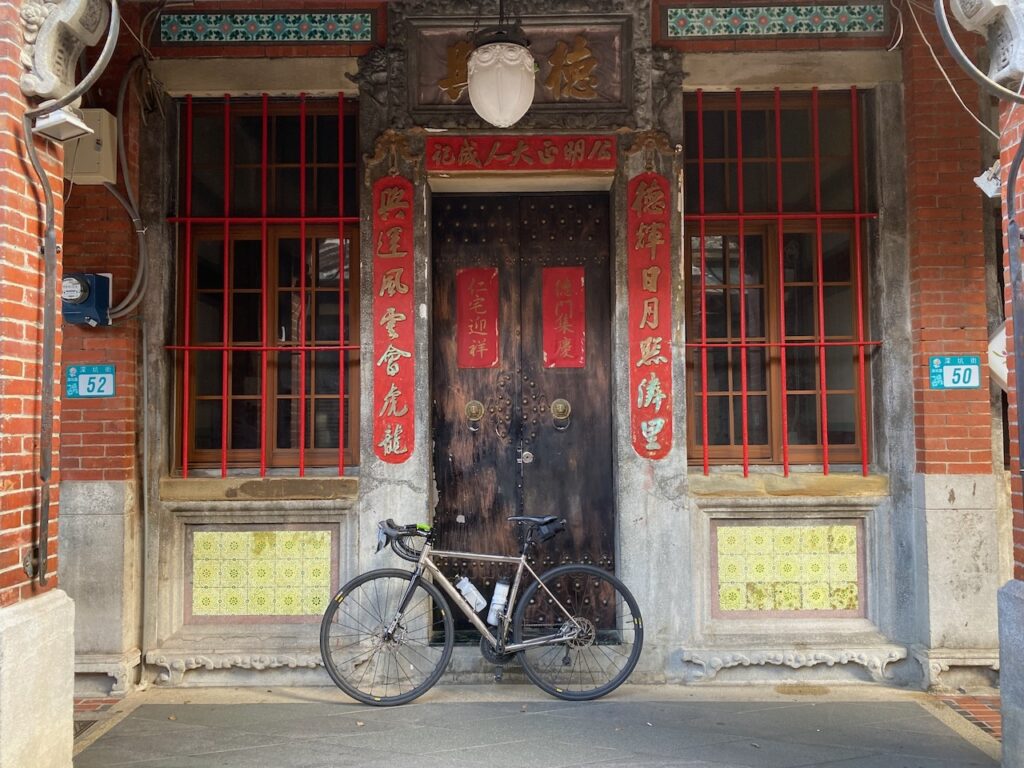
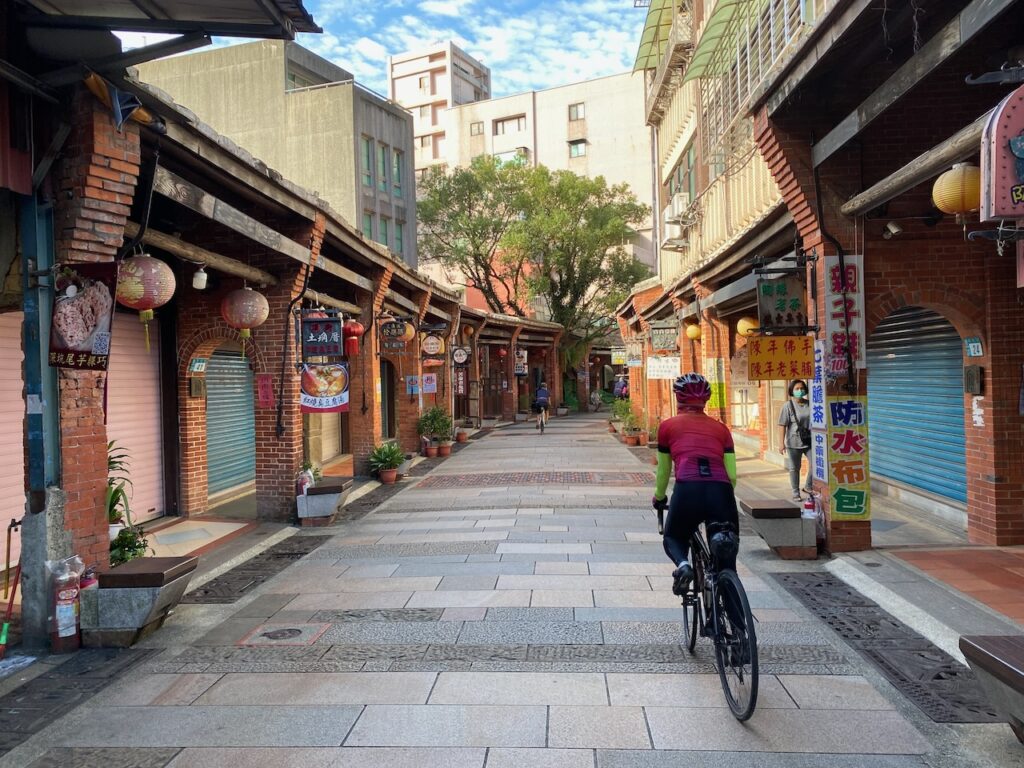
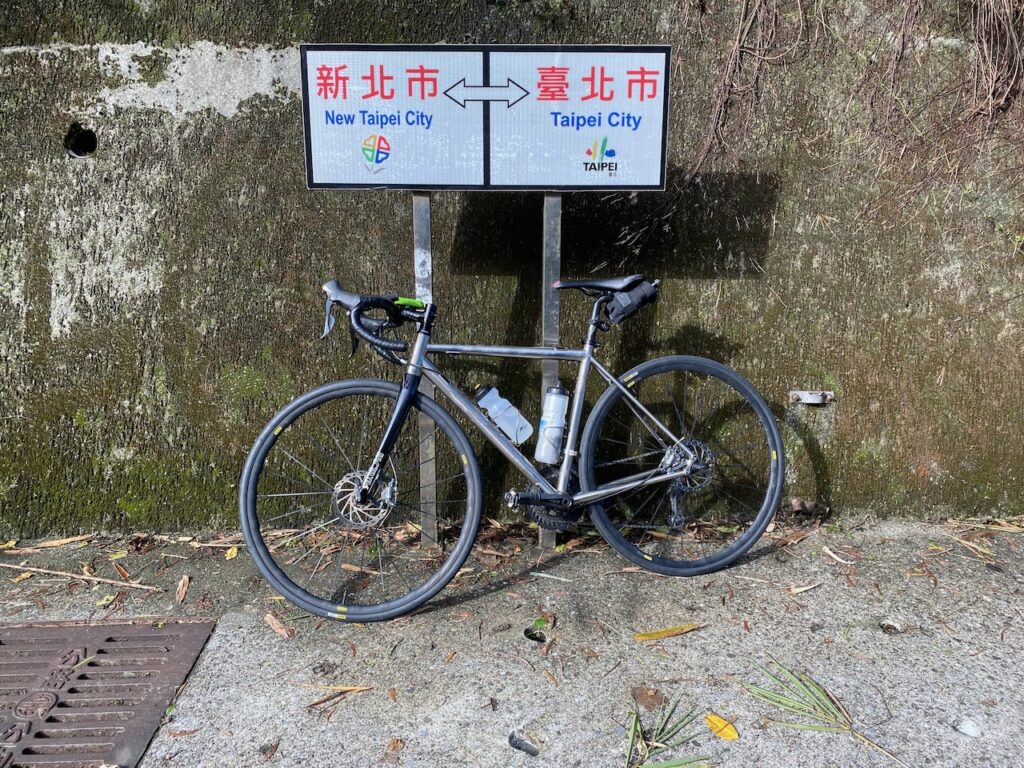
This route could be completed within 3-4 hours, or you can choose to pause at the following points of interest for sightseeing to better explore Taipei. While I’ve selected Songshan Station as the default starting point, feel free to begin your ride anywhere. This post, Navigate Riverside Bikeways in Taipei and New Taipei, provide a list of access points to get into the Riverside Bikeways.
Keelung River
Starting from Songshan Station, the official starting point of Cycle Route No. 1, your journey kicks off with the picturesque Songshan Ciyou Temple greeting you at the entrance of Raohe Night Market before entering the Riverbank Bikeway. Cycling anti-clockwise, you’ll pass under several notable bridges, including the yellow and blue ones both named after the late US General, MacArthur.
Notably, the red cable-stayed Dazhi Bridge, featuring a curved tower and a dedicated bike path, offers a fantastic vantage point to admire the bikeways with the Grand Hotel as a backdrop. Continuing westward, the Lin An Tai Historical House and Museum await just outside the Lin An Tai Evacuation Gate, providing a free glimpse into the lifestyle of a prestigious traditional Chinese household in a great house.
As you proceed on the bikeway, encounter the charm of the Old Children’s Amusement Park, featuring an old merry-go-round and a small ferris wheel on a lush lawn. Dating back to 1934 during the Japanese rule, this area, left to be consumed by vegetation after the opening of a new park in 2014, was lovingly restored and opened to the public in 2019. Not far from here is the old Taipei Zoo.
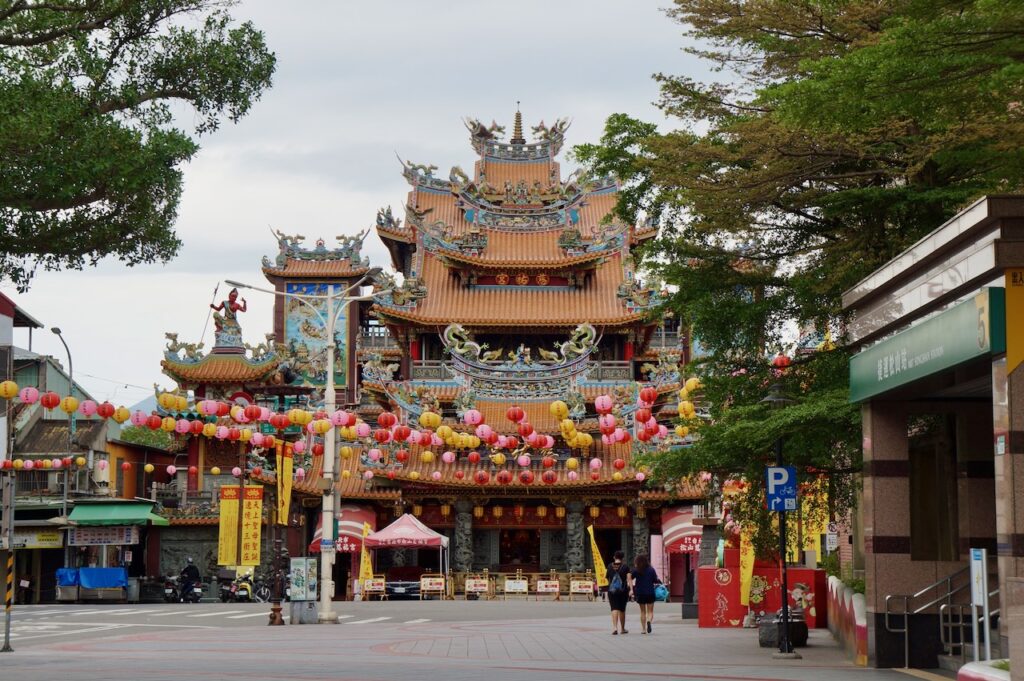
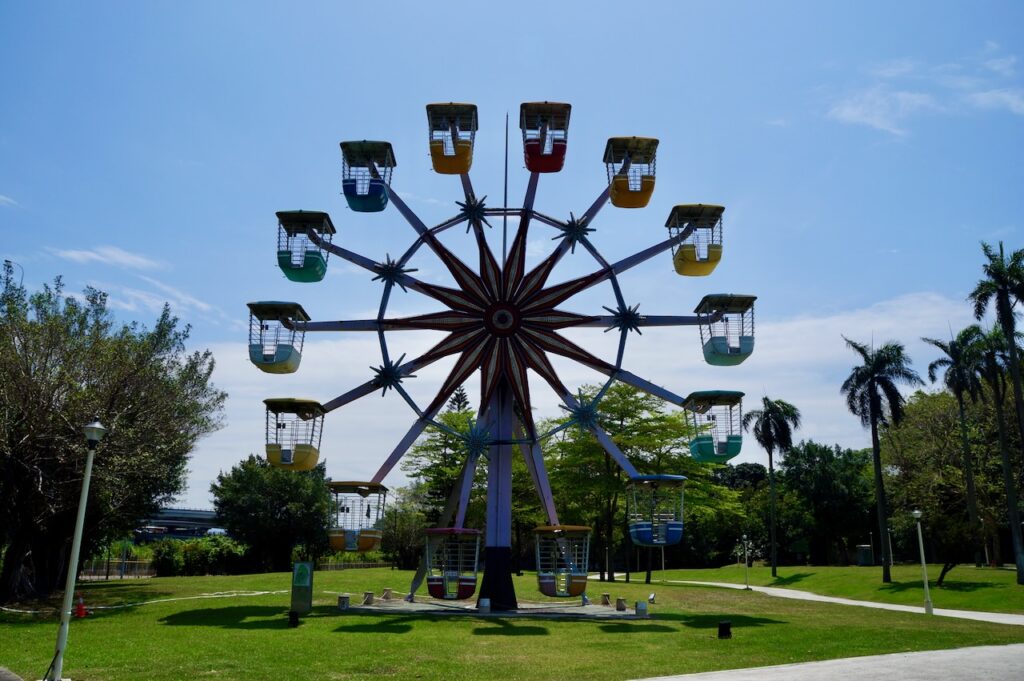
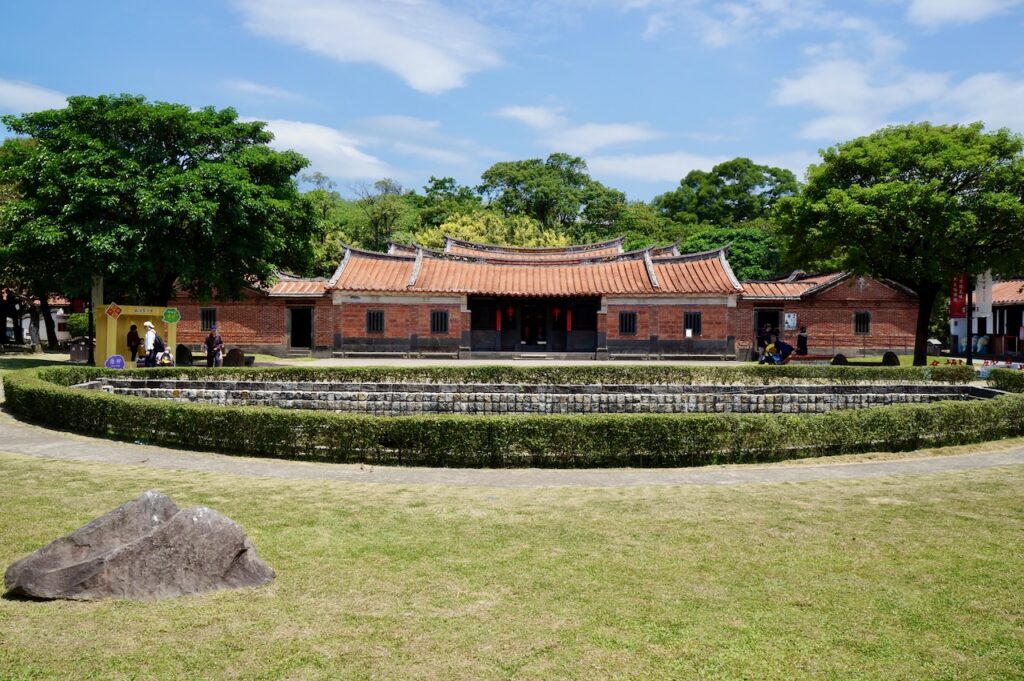
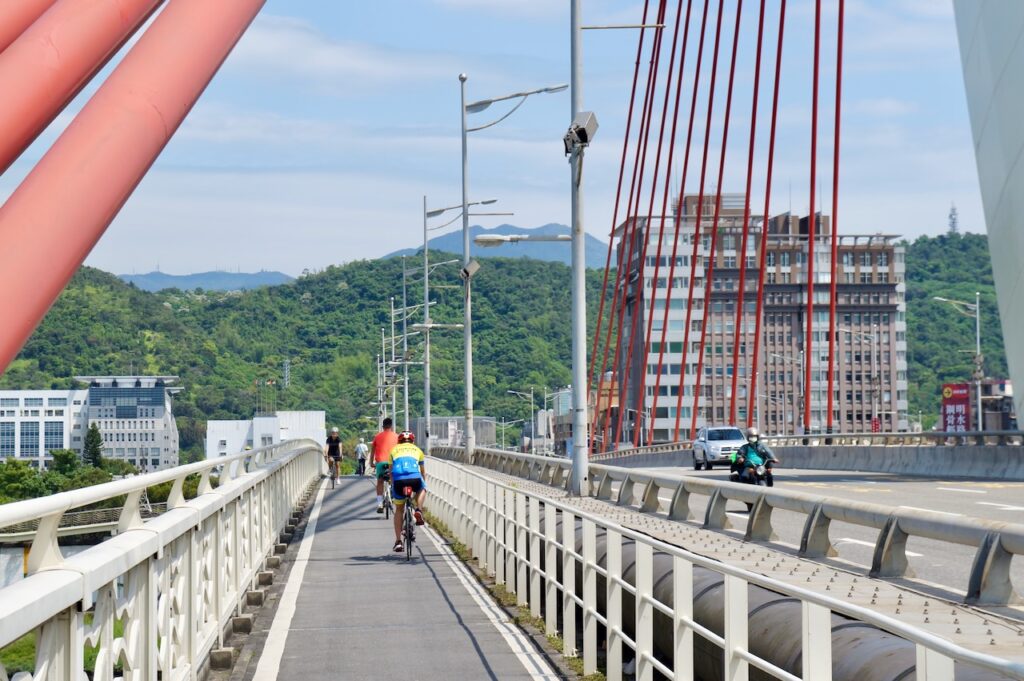
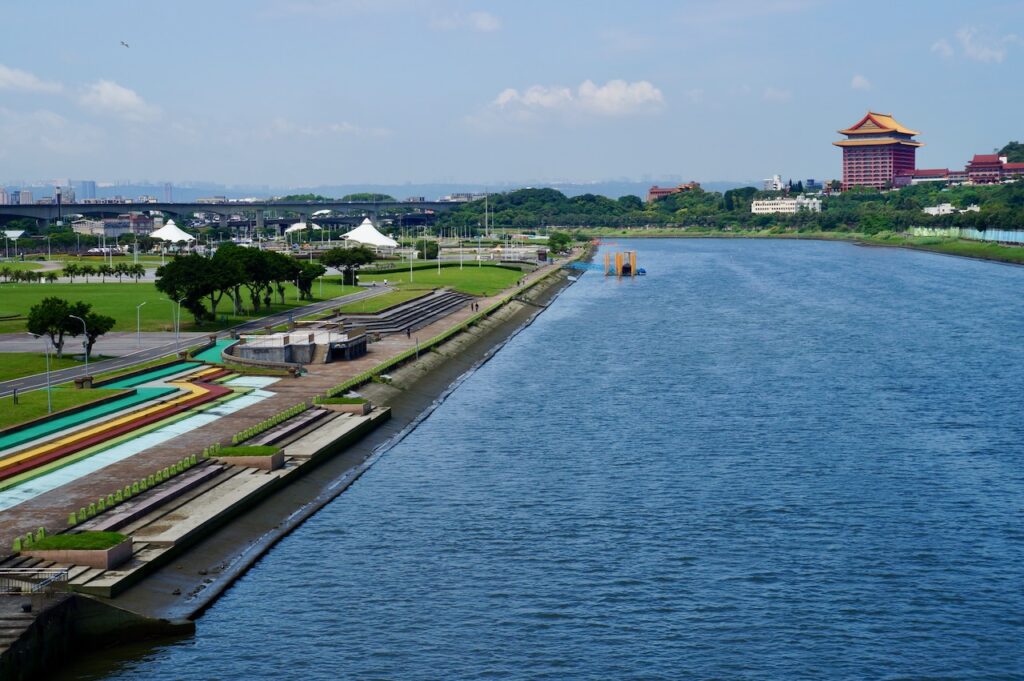
Tamsui River
The bikeway then leads to Shezi Island, shaped like a duck head on the map. At the island’s tip, witness the majestic confluence of the Keelung River and the Tamsui River as they continue their journey into the Pacific Ocean. The area provides a sheltered space with a captivating view of the rivers, offering a perfect pot to unwind. Heading south along the Tamsui River and passing several evacuation gates, you’ll eventually reach the Dadaocheng Pier Plaza. In the evening, this plaza comes to life with containers transformed into cafes. During the Qing rule in the nineteenth century, this pier served as an important trading for local products including tea, rice and camphor. Close by is the renowned Dihua Street, where the business owners were historically situated.
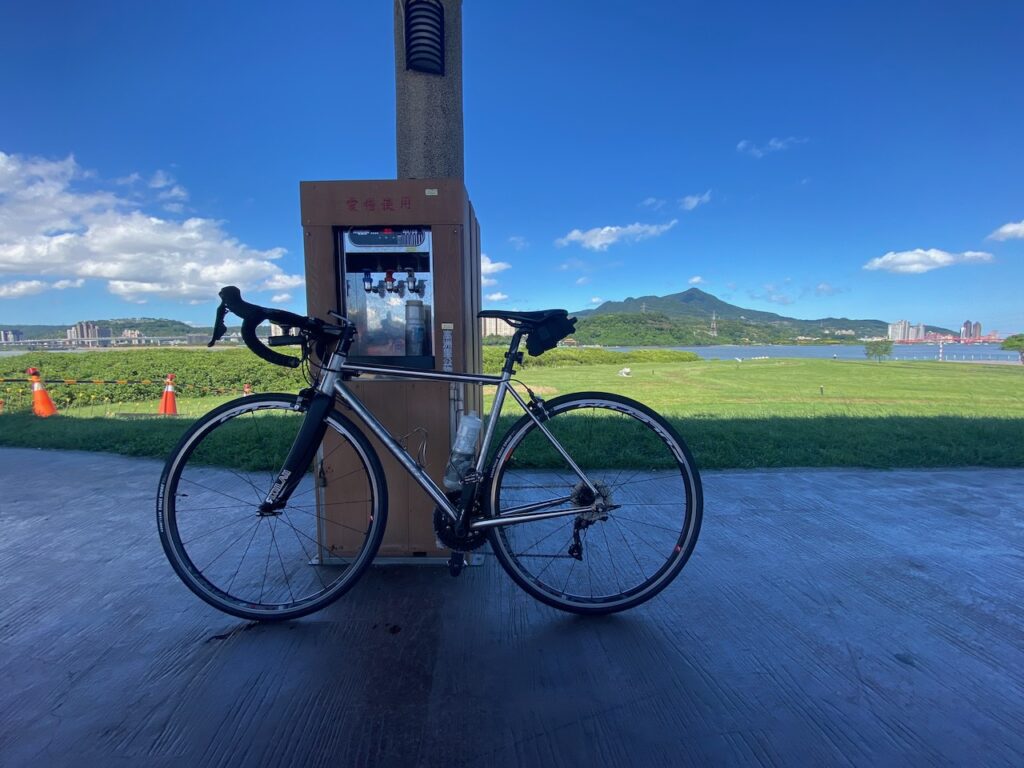
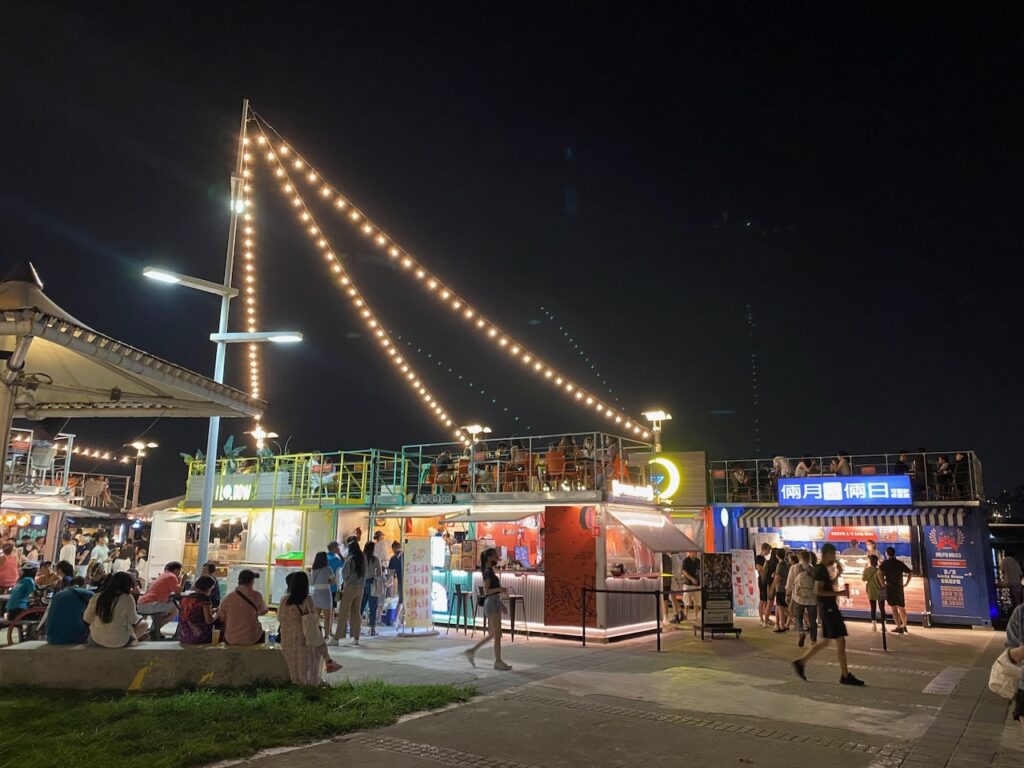
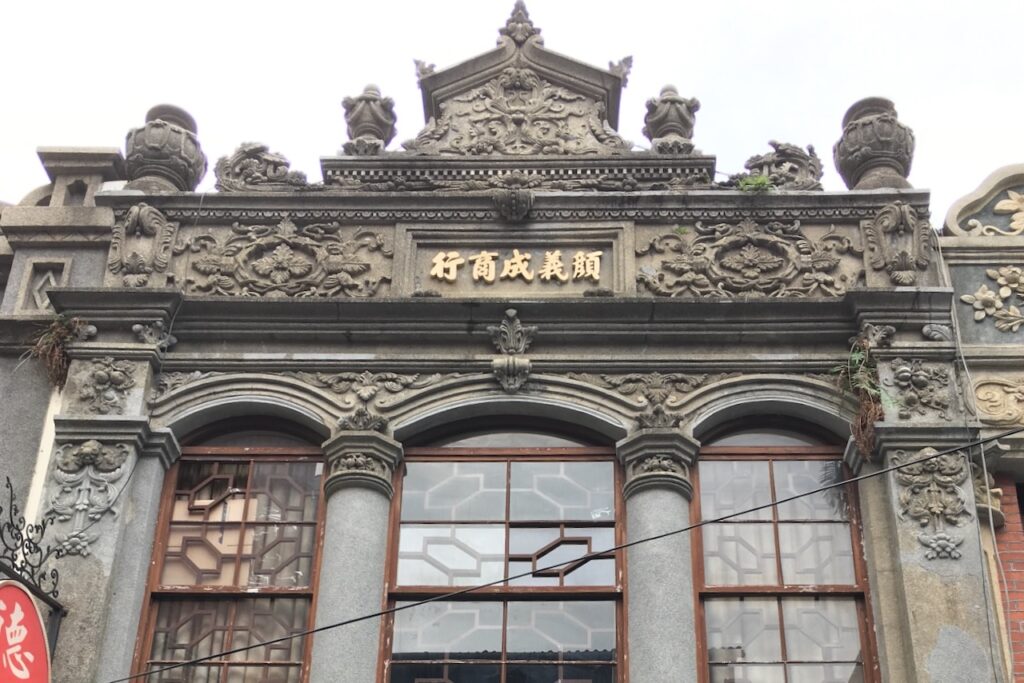

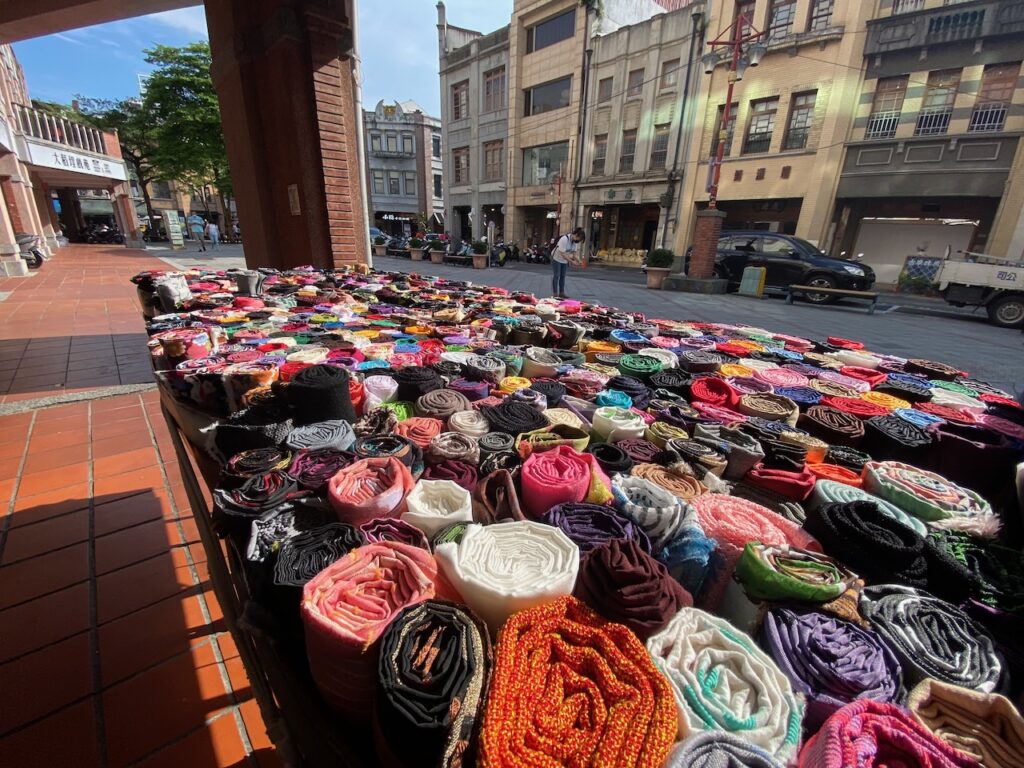
Xindian River
Continuing our ride southward through expansive parks, the Machangting Memorial Park unfolds before us. Originally a training ground for horse riding during the Japanese ruled period. During the KMT White Terror period, the waterfront area – the memorial park – was used as an execution ground.
Continuing further, outside of the wall, you’ll encounter the Kishu An Forest of Literature. This park features a traditional Japanese wooden building, the remnants of a famous Japanese restaurant from the colonial era. Accessible from the Riverside Bikeway, a stairway with a ramp in the middle provides a means to climb over the wall with our bikes.
As we approach the Gongguan district, the Treasure Hill Artist Village emerges before we bid farewell to the Xindian River and transition to the smaller Jingmei River. Nestled on a small hill behind a lush lawn, this site, once a slum housing veterans and immigrants from mainland China after the KMT lost the civil war, has transformed into an art display venue and a haven for artists.
Heading upstream along the Jingmei River, we encounter the New Taipei Zoo, inaugurated in 1987, marking the conclusion of the bikeway before our ascent begins.
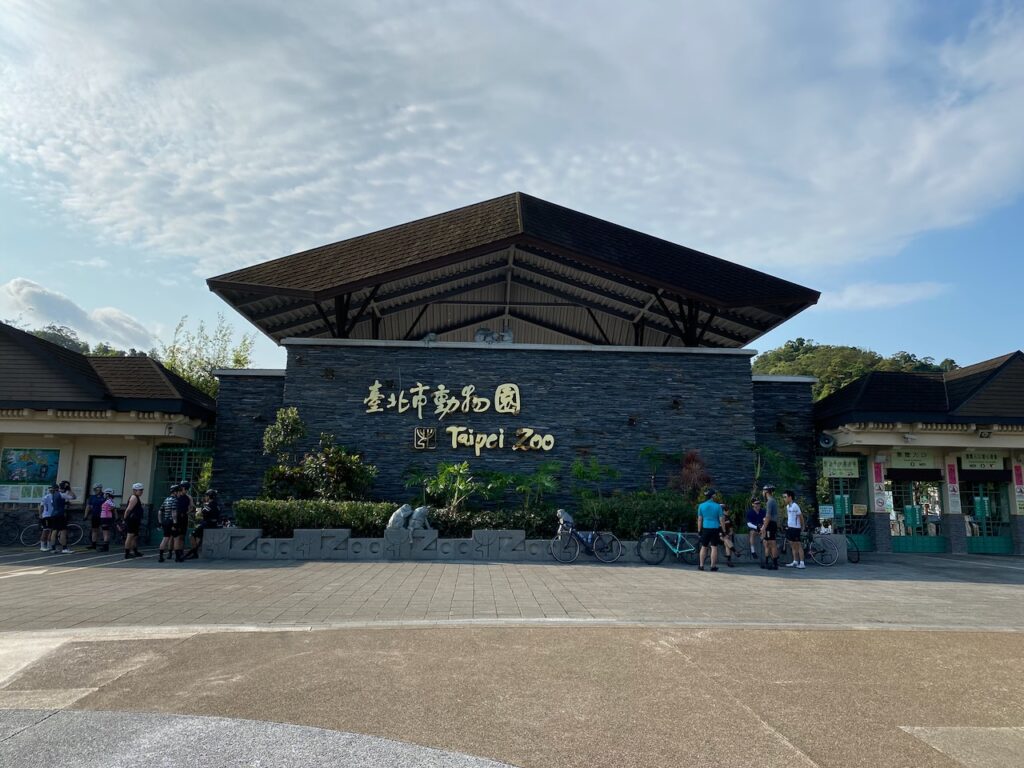
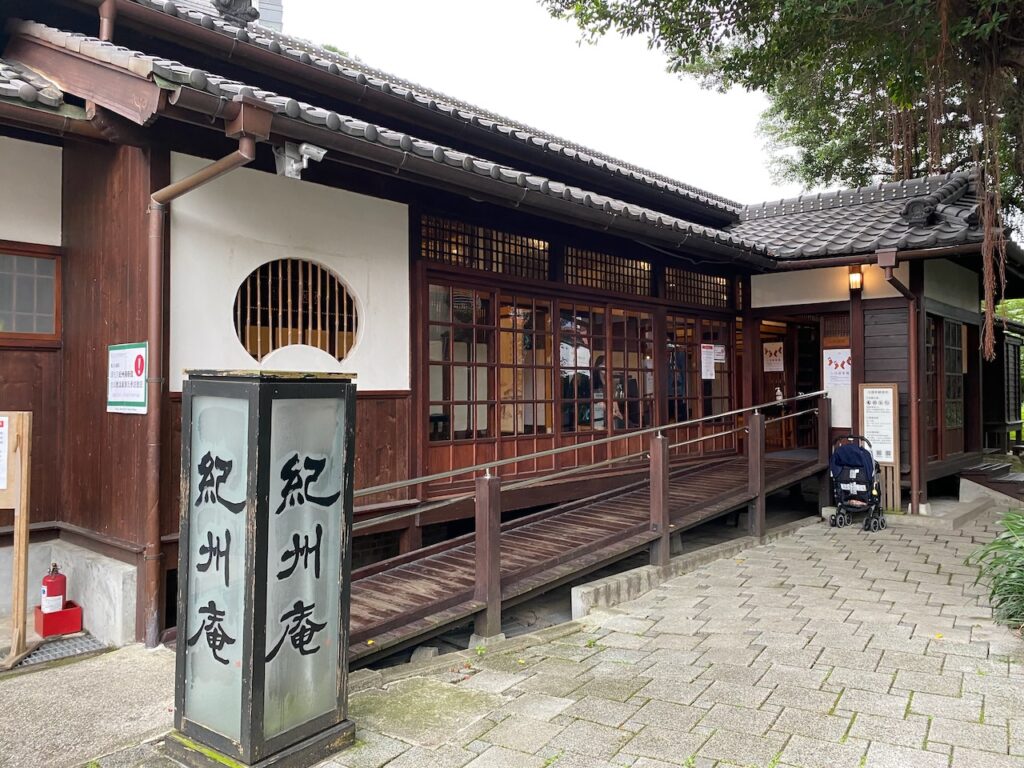
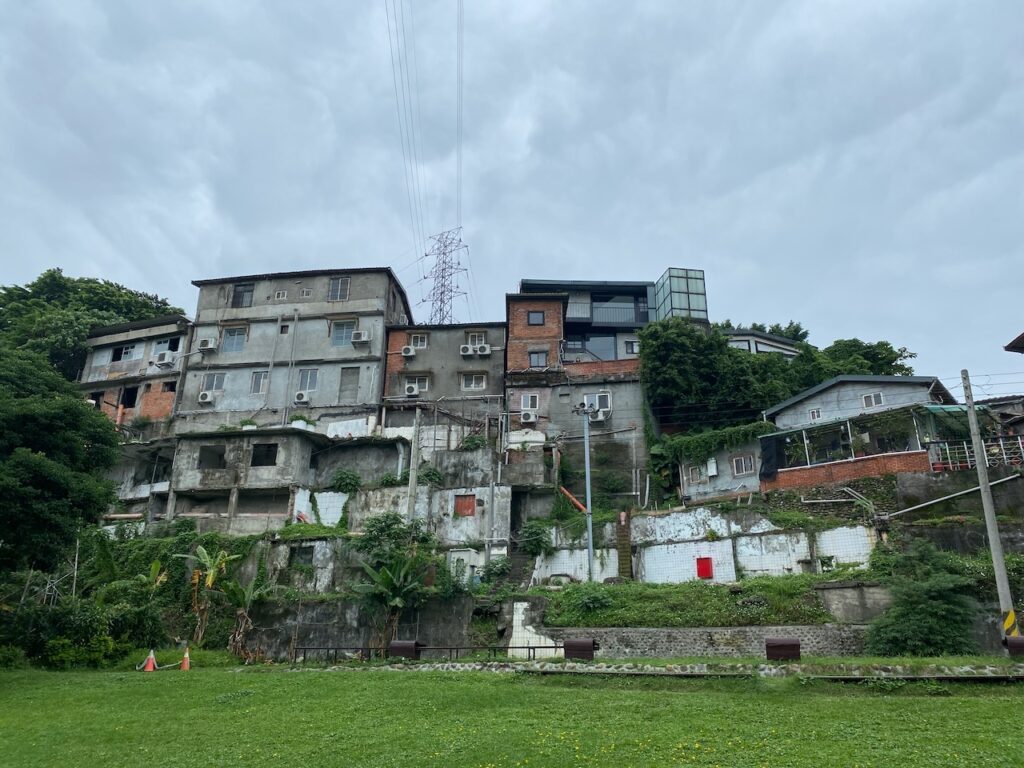
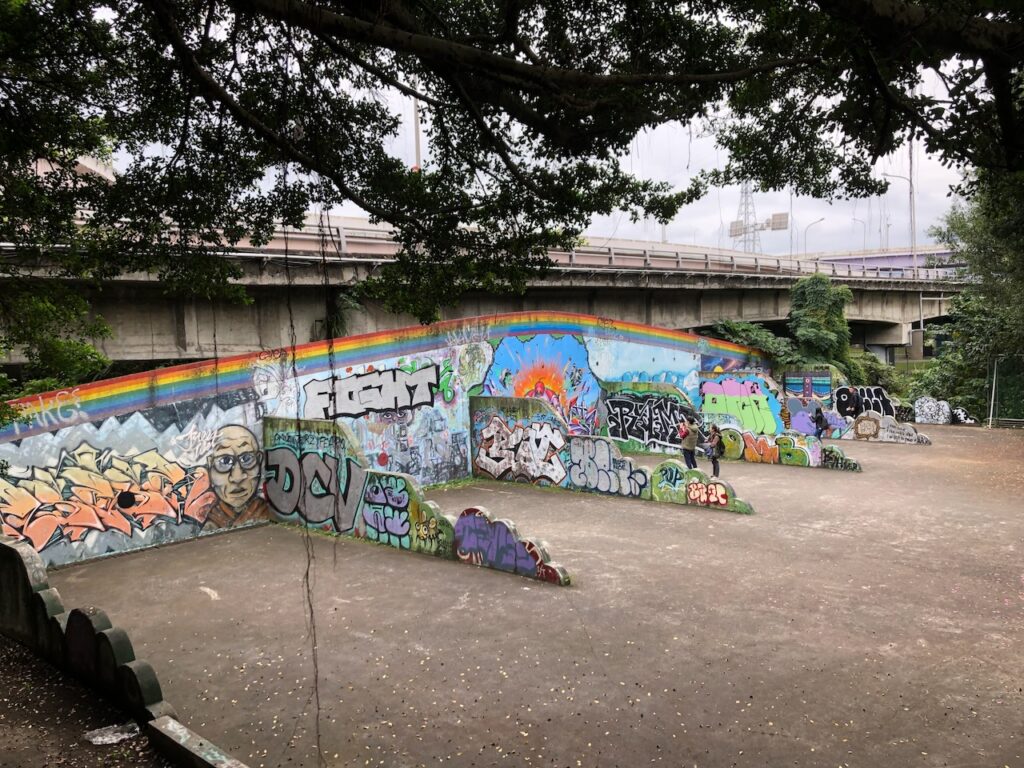
Conclusion
Cycling around Taipei provides not only an excellent training route but also a unique opportunity to explore the cultural heritage of the island, spanning the periods of Dutch and Spanish rule, Qing Rule, Japanese Rule, and the Republic of China Rule. Taipei stands as a city that cherishes and preserves its rich history. And hat off to those dedicated to safeguarding the island’s cultural legacy.
A Brief History Reference:
- Dutch and Spanish 1624 – 1662
- Kingdom of Tungning 1662 – 1683
- Qing Rule 1683 – 1895
- Japanese Rule 1895 – 1945
- Republic of China Rule 1945 – Present
- White Terror 1947 – 1987
For a glimpse into Dutch and Spanish rule, a visit to Tamusi, easily accessible via Riverside Bikeways, allows exploration of Fort San Domingo. While the Kingdom of Tungning left its mark on the southern part of the island, Taipei doesn’t carry significant legacy from this period.
Route
Via Fudekeng
- Garmin: https://connect.garmin.com/modern/course/250378186
- Velodash: https://velodash.page.link/FWFg
- komoot: https://www.komoot.com/tour/1460428263
Via County Highway 106, 109
- Garmin: https://connect.garmin.com/modern/course/250196067
- Velodash https://velodash.page.link/7nkp
- komoot: https://www.komoot.com/tour/1460520761
免責事項
この投稿のグラフィックと情報はすべて台湾政府の交通通信部が構築・維持する全国自転車専用総合入口サイトから提供されたもので、私たちはこれを所有していません。このウェブサイトは台湾一周旅行を計画するすべての人々にとっての情報の権威ある出典です。非常に有用ですが、私たちの意見では使い勝手があまりよくありません。したがって、ここでやろうとしていることは、その情報を私たちが便利でモバイルフレンドリーな形式に再編成することです
